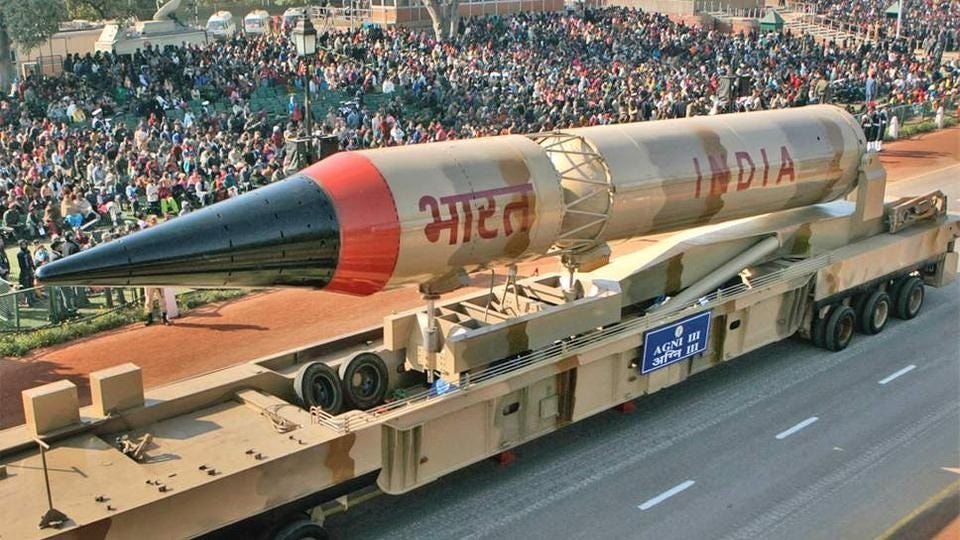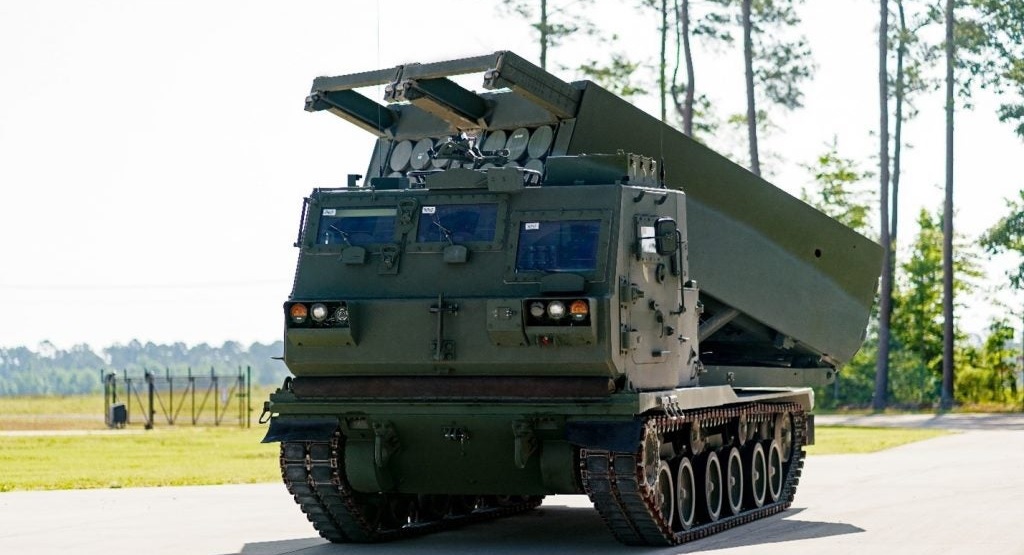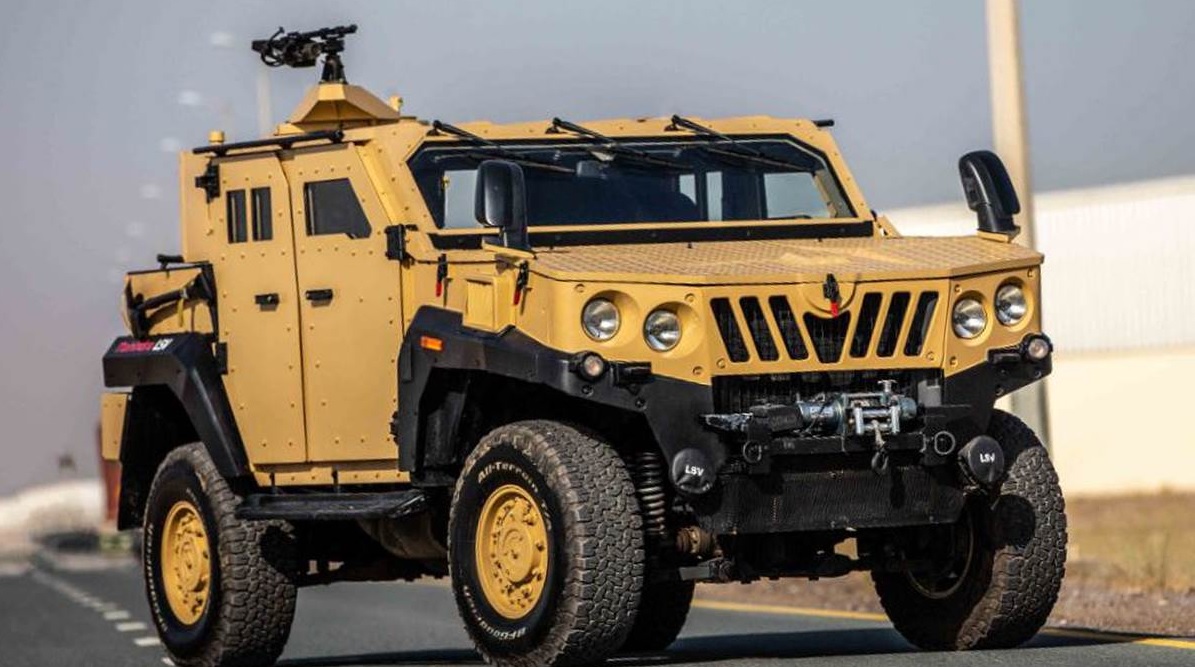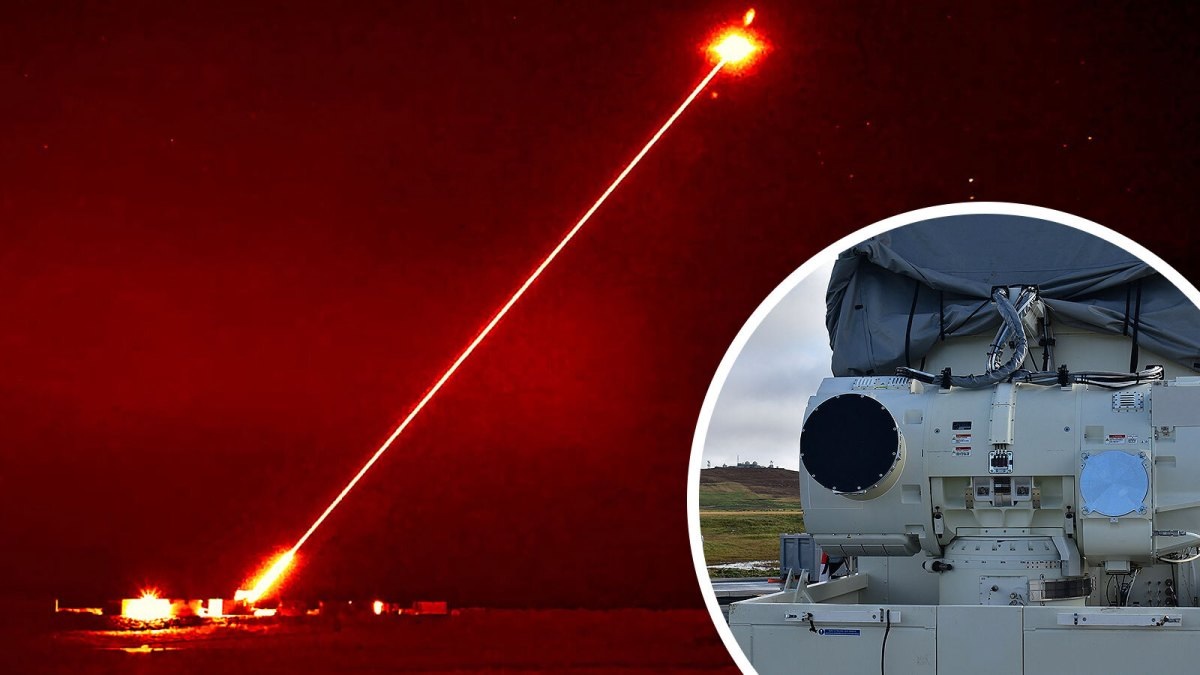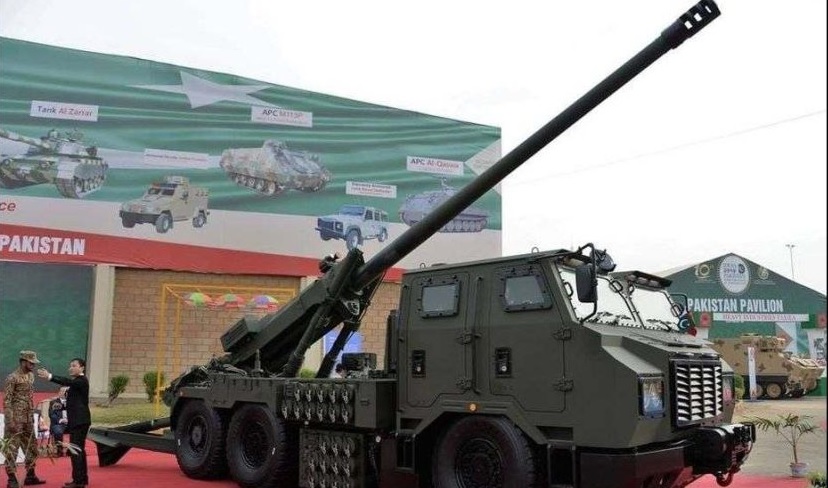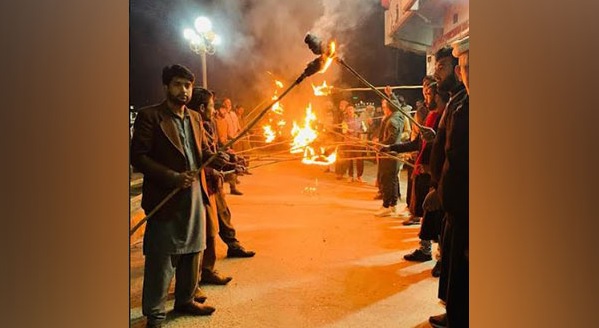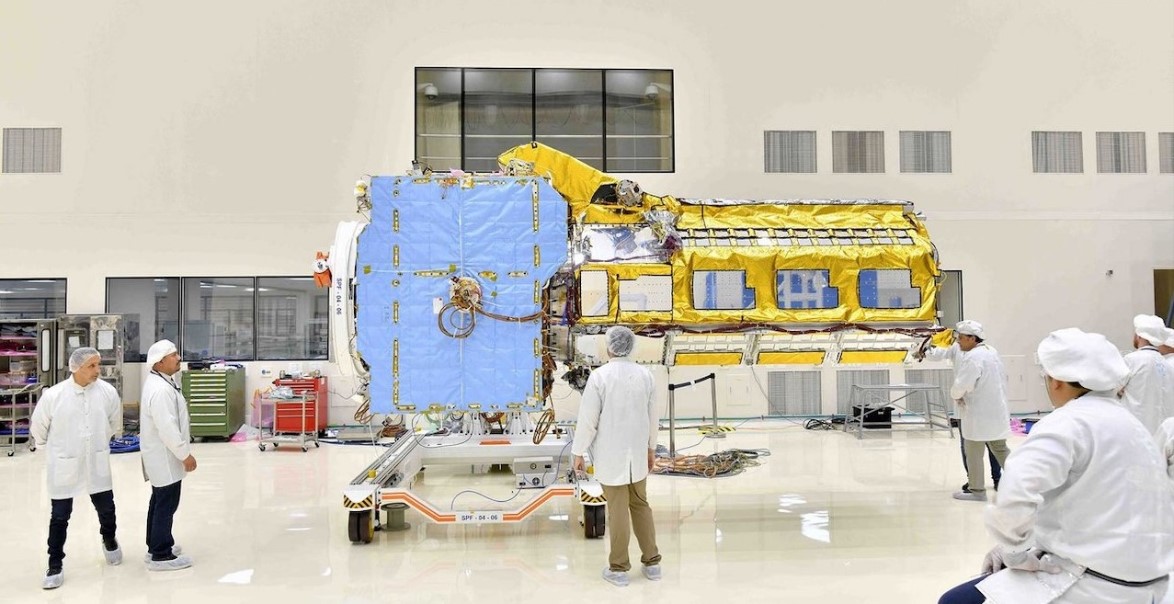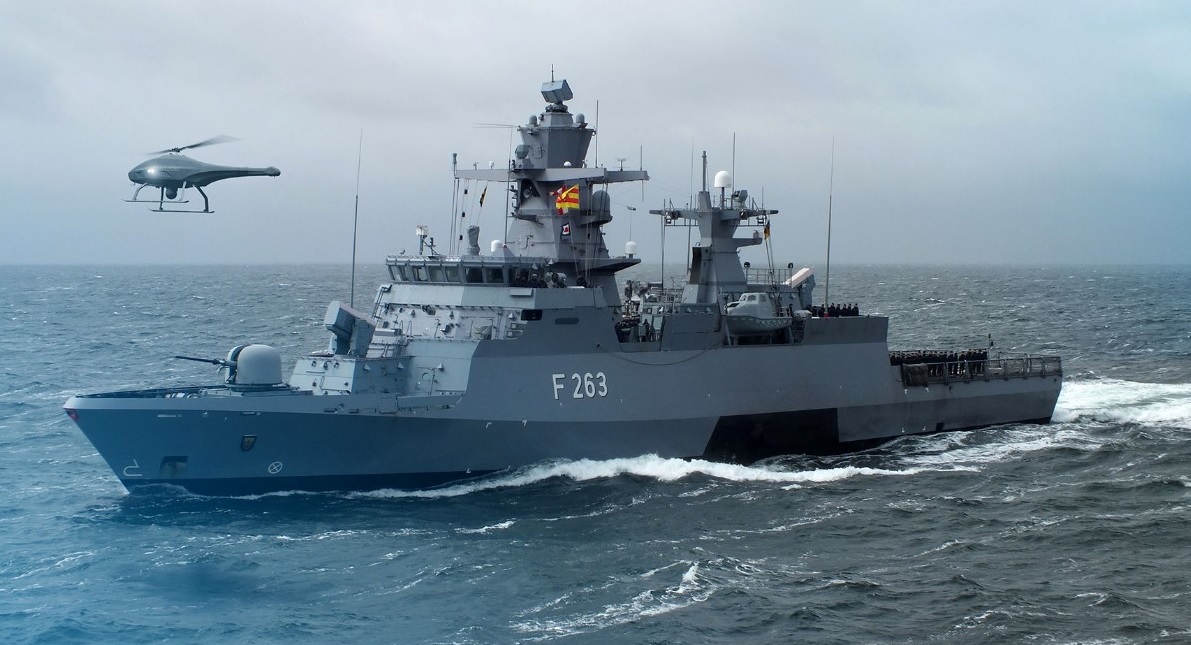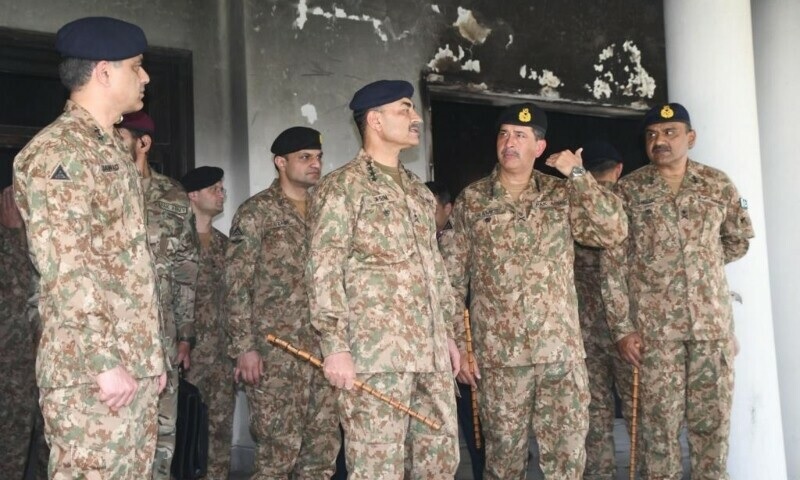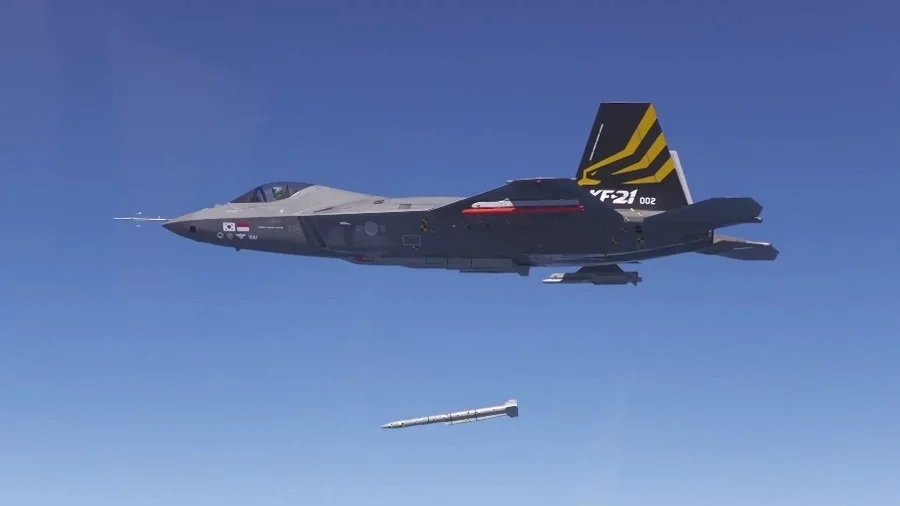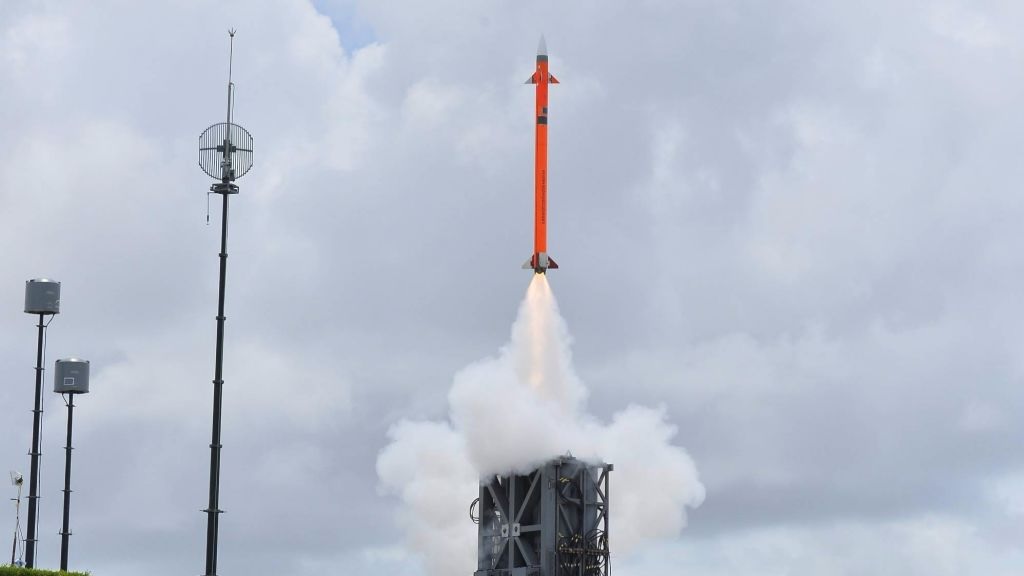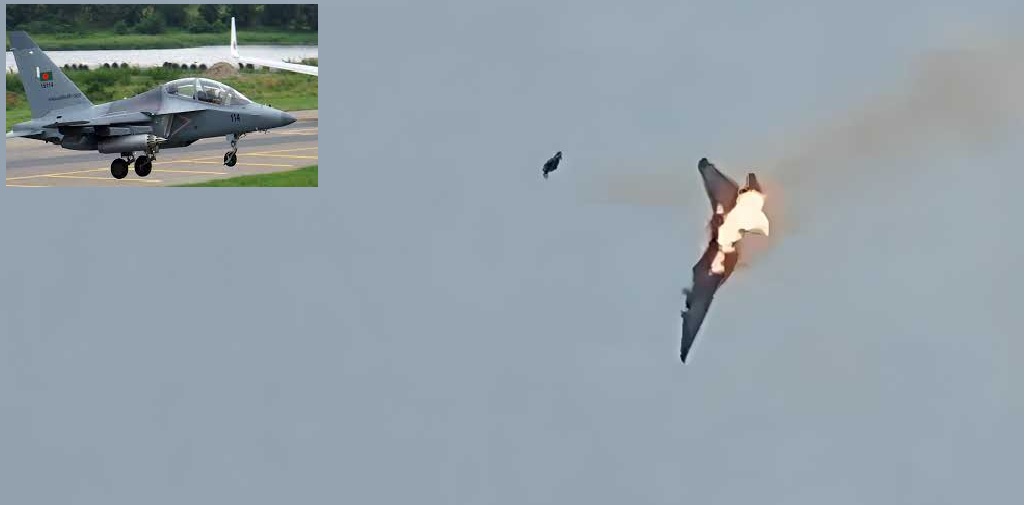India
India ,VietnamA high-ranking Vietnamese military delegation, led by Senior Lieutenant General Phung Si Tan, demonstrates keen interest in the BrahMos supersonic missile system at DSA Malaysia 2024, signaling Vietnam's commitment to modernizing its defense capabilities and forging strategic partnerships with leading defense manufacturers.The recent visit of a high-ranking Vietnamese military delegation to the BrahMos pavilion at DSA Malaysia 2024 has garnered significant attention in defense circles. Led by Senior Lieutenant General Phung Si Tan, Deputy Chief of the General Staff of the Vietnam People's Army (VPA), the delegation demonstrated a keen interest in the BrahMos supersonic missile system and its various iterations.DSA Malaysia 2024, a prominent defense and security exhibition in the Asia-Pacific region, provided an ideal platform for the Vietnamese officials to explore cutting-edge defense technologies. At the BrahMos pavilion, they were introduced to the advanced capabilities of the BrahMos missile, a product of collaboration between India and Russia.BrahMos Aerospace, the entity behind the BrahMos missile system, showcased its range of missile systems and variants, emphasizing their adaptability and effectiveness in modern warfare scenarios. The delegation received detailed briefings and demonstrations on the missile's supersonic speed, precision targeting capabilities, and its potential for deployment across different military platforms.During discussions with BrahMos Aerospace representatives, the Vietnamese delegation delved into potential avenues for collaboration and technology transfer to enhance Vietnam's defense capabilities. They recognized the BrahMos missile system as a powerful deterrent force, capable of bolstering Vietnam's defense posture in the Indo-Pacific region.The visit underscored Vietnam's strategic imperative to explore advanced defense technologies and forge partnerships with leading defense manufacturers to address evolving security challenges. As geopolitical dynamics shift in the Indo-Pacific, Vietnam aims to leverage advanced defense capabilities to safeguard its territorial integrity and maritime interests.DSA Malaysia 2024 serves as a vital platform for defense industry stakeholders to showcase their latest innovations and engage in dialogue on emerging security trends. The Vietnamese delegation's interest in the BrahMos missile system highlights their commitment to modernizing the country's armed forces and strengthening strategic partnerships with key defense manufacturers.In conclusion, collaboration with established defense industry players like BrahMos Aerospace is poised to play a crucial role in shaping Vietnam's defense landscape and safeguarding its national security interests. The visit to the BrahMos pavilion at DSA Malaysia reflects Vietnam's determination to enhance its defense capabilities through strategic partnerships and the adoption of advanced technologies.
Read More → Posted on 2024-05-10 15:53:44India
India The Indian Strategic Forces Command has launched its dedicated intelligence unit, CCIU-SFC, to counter espionage threats from Pakistan, China, and other adversaries targeting its nuclear weapons program.India's Strategic Forces Command (SFC), responsible for managing the country's nuclear arsenal, has reportedly established its own dedicated intelligence unit, the CCIU-SFC. This move signifies India's commitment to fortifying its nuclear security posture against potential espionage attempts.Why a Dedicated Unit?Heightened Threats: The ever-evolving espionage landscape, particularly from neighboring Pakistan and China, necessitates a specialized unit to proactively identify and thwart intelligence gathering efforts targeting India's nuclear weapons program.Improved Focus: A dedicated unit allows for focused expertise in nuclear security matters. SFC personnel can hone their skills in counterintelligence techniques specifically tailored to safeguarding sensitive information and deterring insider threats.What can the CCIU-SFC do?Human Intelligence (HUMINT): The unit is likely to employ human intelligence sources to infiltrate potential spy rings and gather intel on foreign attempts to acquire classified information.Signal Intelligence (SIGINT): Monitoring and analyzing foreign communications could provide valuable insights into ongoing espionage activities.Counterintelligence (CI): Proactive measures to identify and neutralize potential insider threats within the SFC itself are crucial for maintaining the integrity of the nuclear program.Transparency and Reassurance:While details about the CCIU-SFC remain scarce, transparency on its function can be beneficial. Public awareness of India's robust nuclear security measures can reassure its citizens and the international community of its commitment to responsible nuclear stewardship.Potential Implications:Deterrence Effect: The creation of the CCIU-SFC sends a strong message to potential adversaries that India takes nuclear security extremely seriously. This can deter attempts at espionage and strengthen India's nuclear deterrence posture.Arms Race Concerns: An escalation of intelligence gathering efforts in the region could trigger an arms race between India and its neighbors.The Road Ahead:The establishment of the CCIU-SFC signifies a significant step in India's efforts to safeguard its nuclear arsenal. Continued focus on robust security measures and international cooperation on non-proliferation will be essential for maintaining regional stability.In conclusionThe creation of the CCIU-SFC underscores India's commitment to fortifying its nuclear security posture and serves as a proactive measure to address evolving espionage threats. By prioritizing transparency and cooperation, India aims to enhance confidence in its nuclear program while contributing to global efforts to prevent the proliferation of nuclear weapons.
Read More → Posted on 2024-05-10 15:46:07World
U.S Lockheed Martin secures a USD 451M contract to upgrade M270 systems, bolstering defense capabilities for the U.S. Army and international allies.Lockheed Martin, a renowned aerospace and defense company, has been awarded a significant contract by the U.S. Army, totaling USD 451 million. The purpose of this contract is to recapitalize additional M270 systems, thereby expanding the country's domestic fleet of launchers and facilitating upgrades for global partners.This recent award builds upon an initial agreement made back in 2019, along with subsequent contracts aimed at enhancing mission readiness through the year 2050.Jay Price, Vice President of Precision Fires at Lockheed Martin, expressed the importance of this modernization effort. He highlighted that it will not only bolster the capabilities of the combat-proven launcher but also ensure its reliability and interoperability with NATO forces for many years to come. Additionally, Price emphasized that this procurement will provide added precision fires capability to global partners, enhancing their defense capabilities.The recapitalization process involves a comprehensive overhaul and upgrades to the M270 systems. These upgrades include the installation of brand new engines, improved armored cabs, and the integration of the new Common Fire Control System (CFCS). The CFCS is designed to ensure compatibility with both current and future MLRS Family of Munitions (MFOM). Notably, Lockheed Martin's next-generation Extended-Range GMLRS and Precision Strike Missile (PrSM) can only be fired by M270A2 and HIMARS launchers.The M270, a heavy tracked mobile launcher, is transportable via C-17 and C-5 aircraft. It is capable of firing Guided MLRS rockets and Army Tactical Missile System missiles. With the recapitalization efforts, the M270 will also be equipped to fire the Precision Strike Missile and Extended-Range GMLRS rockets, which are currently in development.Overall, Lockheed Martin's contract to enhance the M270 systems underscores its commitment to providing advanced defense solutions to meet the evolving needs of the U.S. Army and its global partners. Through this modernization effort, the M270 launcher is poised to remain a vital asset in ensuring national security and international defense cooperation for years to come.
Read More → Posted on 2024-05-10 15:34:16India
India New Space Research & Technologies (NRT) partners with Forge for the O.C-9.0 Challenge, aiming to advance High Altitude Pseudo-Satellite (HAPS) technology, showcasing India's growing aerospace innovation on a global scale.New Space Research & Technologies (NRT), a leading company in India's aerospace and defense sector, has joined forces with Forge for a significant project called the O.C-9.0 Challenge – High Altitude Pseudo-Satellite (HAPS) MK1. This collaboration highlights NRT's commitment to driving innovation in Next-Generation Missions and Technologies (NGM&T) worldwide.NRT is well-known for its advanced work in Manned-Unmanned Teaming (MUM-T). This technology smoothly combines crewed fighter aircraft with fleets of unmanned aerial vehicles (UAVs) and uncrewed combat aerial vehicles (UCAVs), making military air assets more effective and extending their operational range.One of NRT's main areas of expertise is in developing High Altitude Pseudo-Satellites (HAPS). These specialized UAVs are designed to fly at very high altitudes between 5km and 20km. They can stay in the air for an impressive amount of time, sometimes exceeding three months. This makes them ideal for long-term Earth observation missions and building strong communication networks.NRT uses its advanced UAVs for various purposes, both military and civilian. These include surveillance, secure communication, search and rescue missions, tracking locations and assets, monitoring the environment and climate, and improving agricultural practices.The O.C-9.0 Challenge – HAPS MK1 likely focuses on creating or demonstrating a new, highly capable HAPS platform. By partnering with Forge, NRT brings its expertise in HAPS technology to this challenge. This collaboration shows NRT's determination to lead in this rapidly evolving field.India's aerospace industry is witnessing a surge in innovation, and NRT's involvement in this partnership showcases the nation's growing importance in the global arena. The results of the O.C-9.0 Challenge could have significant implications for defense, communication, and scientific exploration in the future.
Read More → Posted on 2024-05-10 15:29:01India
India Mahindra Defence Systems introduces the Armado, a versatile Armoured Light Specialist Vehicle, delivering robust performance and ballistic protection for diverse military operations. Designed for agility and adaptability, it exceeds expectations with its powerful engine, advanced tire technology, and configurable passenger capacity.Mahindra Defence Systems (MDS), a subsidiary of Mahindra & Mahindra, has achieved a significant milestone by commencing deliveries of the Armado, a newly developed Armoured Light Specialist Vehicle (ALSV), to the Indian armed forces. In the current financial year (FY24), MDS has surpassed expectations by delivering over 719 vehicles, including the ALSV, Markshman, and Mrap models, marking the highest annual total for the company.The Armado is a versatile vehicle designed to meet various operational needs. With ballistic protection up to B7 Stanag Level II, it is well-suited for counter-terrorism operations, patrolling conflict zones, and supporting special forces. Its adaptability extends to carrying ammunition, reconnaissance missions, and border patrols. The vehicle's design allows it to navigate challenging terrains, from open fields to desert landscapes.Underneath its robust exterior, the Armado features a powerful 3.2-litre turbocharged, direct-injection diesel engine. This engine, compatible with Nato-grade diesel, delivers 215 horsepower and 500 Nm of peak torque, providing ample power for various operations. A 4-speed automatic transmission system distributes power to all wheels.Despite its sturdy construction, the Armado offers impressive performance, reaching speeds exceeding 120 kilometers per hour and accelerating from 0 to 60 kilometers per hour in just 12 seconds. It boasts a payload capacity of 1,000 kilograms, enabling it to carry essential equipment and personnel.Equipped with 318/80 R17 profile tires designed to withstand punctures and operate with no air pressure, the Armado ensures reliability even in challenging conditions. A centralized tire inflation system allows for on-the-go tire management. The vehicle can be customized as either a left-hand drive or a right-hand drive to meet operational requirements.With a configurable passenger capacity, the Armado can comfortably seat six personnel, including the driver, with the option to accommodate up to eight individuals.In conclusion, the Armado represents a significant advancement in defence vehicle technology, offering versatility, robust performance, and adaptability to meet the diverse needs of the Indian armed forces. Mahindra Defence Systems' commitment to innovation and excellence is evident in the design and capabilities of the Armado, reinforcing its position as a leading provider of defence solutions.
Read More → Posted on 2024-05-10 15:24:07World
U.K ,Ukraine The UK clarifies that its military aid package to Ukraine does not include the DragonFire laser weapon, which is still under development and slated for deployment by 2027. Despite earlier intentions to expedite production, the high-energy system remains unavailable for immediate deployment.In a recent parliamentary session, there was clarification on the contents of the UK's newly-approved military aid package to Ukraine. Contrary to earlier reports, the package does not include the DragonFire laser weapon. Labor minister John Martin McDonnell sought clarification on this matter, prompting armed forces minister Leo Docherty to provide insights.Docherty outlined that the aid package consists of more than 400 armored vehicles, 1,600 munitions, and additional Storm Shadow long-range missiles. Regarding the DragonFire laser weapon, Docherty explained that it is still in the developmental stage and won't be deployed until 2027. Hence, it was not feasible to include it in the current aid package. However, Docherty did not rule out the possibility of sending the DragonFire to Ukraine once its development and testing phases are completed. This stance contrasts with earlier announcements by UK defense secretary Grant Shapps, who expressed intentions to accelerate the production process to make the weapon available sooner.Shapps had highlighted the significance of the DragonFire in countering the use of drones, which Russia has employed in significant numbers in support of various missions in Ukraine. Despite the operational timeline extending to 2027, Shapps expressed willingness to expedite the deployment process, even if the system isn't perfect.The DragonFire laser weapon is touted for its ability to effectively neutralize drones using an intense beam of energy. It integrates advanced components to track moving targets accurately, providing a cost-effective alternative to traditional ammunition. The UK defense ministry estimates that firing a 10-second laser burst costs approximately $13, eliminating the need for expensive munitions.However, before the DragonFire can be declared operationally ready, it will undergo rigorous live-fire tests to ensure its effectiveness and reliability in real-world scenarios.In summary, while the UK's aid package to Ukraine does not currently include the DragonFire laser weapon, there remains potential for its deployment in the future once development milestones are achieved.
Read More → Posted on 2024-05-10 15:08:01India
Pakistan ,IndiaPakistan accelerates acquisition of advanced Chinese mobile artillery systems, outpacing India's procurement efforts and raising concerns over regional military balance.In today's world, military strength isn't just about big guns—it's about being fast and adaptable. Recent reports indicate that Pakistan is rapidly enhancing its artillery capabilities with the acquisition of hundreds of advanced mobile artillery systems from China. These systems, known as SH-15 155mm Mounted Gun Systems (MGS), are mounted on trucks, giving them a significant advantage over traditional towed artillery.What sets these MGS apart is their ability to quickly fire a few rounds and then relocate before the enemy can respond. This "shoot and scoot" tactic makes them harder to target and hit. In contrast, towed artillery requires more time to set up and take down, making them vulnerable to enemy fire, especially in today's battlefield, where drones and loitering munitions are becoming increasingly prevalent.Since 2018, Pakistan has been securing deals with China for these advanced systems. It's rumored that Pakistan's orders may exceed 400 units, surpassing India's current fleet of K-9 Vajra-T tracked howitzers. The reported deployment of these systems near the Line of Control in 2023 has heightened India's concerns, particularly given China's presence in Tibet.On the other hand, India's procurement of similar systems has faced obstacles due to bureaucratic delays. Despite ambitious plans, progress has been slow. However, there is hope in the growth of India's own artillery industry. Companies like Kalyani and Bharat Forge are now producing advanced howitzers domestically. The success of India's military modernization efforts hinges on embracing these local capabilities and expediting procurement processes.This development underscores the ongoing arms race between India and Pakistan, highlighting the importance of staying ahead in military technology and capabilities. How India responds to Pakistan's acquisition of these advanced systems will be critical in maintaining the regional military balance. Streamlining procurement procedures and investing in indigenous solutions will be key steps in ensuring India's readiness for future challenges.In conclusion, Pakistan's acquisition of advanced mobile artillery systems poses a significant challenge to India's military preparedness. To effectively counter this threat, India must prioritize modernization efforts and leverage domestic capabilities to stay ahead in the evolving security landscape of South Asia.
Read More → Posted on 2024-05-10 14:58:43World
U.K L3Harris Technologies secures an $18 million contract with the UK Ministry of Defence to supply up to 50 T4 explosive ordnance disposal robots, enhancing EOD capabilities in confined urban spaces. The versatile T4 robots, known for their compact design and intuitive control, enable safe and effective threat neutralization, reinforcing national security efforts.L3Harris Technologies has been awarded an $18 million contract by the UK Ministry of Defence (MOD) to provide up to 50 medium-sized T4 explosive ordnance disposal (EOD) robots. These robots are designed to neutralize explosive threats in confined urban areas, bolstering the EOD capabilities of the British Army.The contract encompasses the delivery of robots, in-country support, maintenance, and training. This initiative builds upon L3Harris’ successful completion of Project STARTER, where 122 T7™ systems replaced the previous fleet of large EOD robots and have been operational since 2019.Lt. Gen. Simon Hamilton, Director General Land, Defence Equipment and Support, U.K. MOD, emphasized the significance of these robots in advancing the MOD’s land modernization efforts. The T4 robots, akin to their predecessors, the T7, are pivotal in meeting the evolving challenges of the future threat landscape. Their agility, modularity, and high capabilities are crucial for addressing diverse threats effectively.Ed Zoiss, President of Space and Airborne Systems at L3Harris, underscored the readiness of the company to deliver these essential systems to the UK armed forces. The T4 robots, with their compact footprint and intuitive control features, enable operators to safely navigate and mitigate threats in smaller spaces, enhancing overall operational effectiveness.This contract win with the UK MOD follows L3Harris’ successful bid for T4 and T7 variants with the Australian Defence Force, as part of their Land-154 program. These robots, slated for delivery from mid-2024 onwards, will augment EOD unit capabilities for improvised explosive device neutralization, exploitation, and route clearance.Additionally, the U.S. Air Force has procured over 100 T7 robots to support EOD missions globally, with many already operational. This underscores the growing recognition of L3Harris’ robotic solutions for enhancing EOD operations across various defense forces.In conclusion, the selection of L3Harris Technologies by the UK MOD for the provision of T4 EOD robots represents a significant milestone in strengthening national security capabilities. These advanced robotic systems will empower EOD operators to tackle explosive threats efficiently and safeguard lives in complex urban environments.
Read More → Posted on 2024-05-10 14:50:52India
India , China China's launch of its third aircraft carrier, the Fujian, has sent ripples through the Indo-Pacific. While India boasts two carriers itself, the question arises: can India effectively counter China's growing naval power with its existing weaponry? Carrier Comparison: A Numbers GameOn paper, China's carriers hold a clear advantage. The Fujian is a technologically advanced behemoth, displacing over 80,000 tons and likely carrying more aircraft than India's Vikrant and Vikramaditya (both around 45,000 tons). However, military might isn't just about size First Biggest Question:How China's Aircraft Carrier Group Entered the Indian Ocean ?There are several possible routes an aircraft carrier group from China could take to enter the Indian Ocean, depending on their starting point and destination. Here are two main options:East China Sea - South China Sea - Malacca Strait - Andaman Sea: This is the most likely route, as it is the shortest and most direct way from China's southeastern coast to the Indian Ocean. However, it also takes the carrier group through a strategically important chokepoint, the Strait of Malacca, which is controlled by several countries, including Malaysia and Singapore.East China Sea - Pacific Ocean - Sunda Strait - Indian Ocean: This route bypasses the Malacca Strait but is slightly longer. The Sunda Strait, between Sumatra and Java in Indonesia, is another chokepoint but less congested than Malacca.Other factors that could influence the route choice include:South China Sea - Karimata Strait - Indian Ocean: This route avoids both the Malacca and Sunda straits but adds significant distance. The Karimata Strait is south of Borneo and less restricted If China's Aircraft Carrier Group Enter the Indian Ocean Through Malacca Strait.The Andaman and Nicobar Islands do pose a strategic challenge for a Chinese aircraft carrier group entering the Indian Ocean via the Malacca Strait here's how: Geographical Advantage:Location: The Andaman and Nicobar Islands sits right at the entrance to the Malacca Strait, effectively creating a chokepoint. This allows India to potentially monitor and restrict the movement of the carrier group.Island chain: The islands themselves can be used as forward bases for Indian military assets.Military Capabilities:Anti-access/Area Denial (A2/AD) Weapons: India can deploy these on the islands to make it difficult for the carrier group to operate freely. This could include missile systems, submarines, and maritime patrol aircraft.Airbases: India has airbases in the Andaman and Nicobar Islands that could be used to launch fighter jets and bombers to threaten the carrier group.Impact on China:Lengthened Routes: If China feels the Malacca Strait is too risky due to the Indian presence, they are forced to take longer routes through the Sunda Strait or Karimata Strait, delaying their arrival and strategic goals.Resource Drain: China may need to dedicate additional resources to defend the carrier group against potential Indian threats. If China's Aircraft Carrier Group Successfully Entered the Indian Ocean Through Other Option. India's Asymmetric Response With Navy Battle Carrier Group.1. Su-30 MKI With BrahmosThe combination of multiple Su-30 MKI fighter jets armed with BrahMos missiles poses a significant threat to China's new aircraft carrier group in the Indian Ocean, for several reasons: BrahMos's Reach and Power:Long-range Supersonic Threat: BrahMos missiles are hypersonic (Mach 5+) or supersonic (Mach 3+) cruise missiles, making them extremely difficult to intercept by a carrier's air defense systems. Their extended range (potentially exceeding 800 km) allows Su-30 MKIs to launch attacks from well outside the effective range of the carrier's defenses.Devastating Impact: The BrahMos missile carries a large warhead, capable of inflicting significant damage on an aircraft carrier if it lands a successful hit. Su-30 MKI's Advantages:Multirole Flexibility: Su-30 MKIs are capable long-range fighters. They can fly long distances to reach the operational area and carry multiple BrahMos missiles for a concentrated attack.Large Numbers: India possesses a sizable fleet of Su-30 MKI fighters, allowing for a coordinated multi-aircraft strike, overwhelming the carrier's defenses. Exploiting Carrier Vulnerabilities:Limited Air Defense: Aircraft carriers, despite having advanced defensive systems, have a limited defensive radius. A well-coordinated missile attack from multiple Sukhoi-30s, potentially launched from different directions, could overwhelm the carrier's defenses.Carrier Group's Reliance on Support Ships: Aircraft carrier groups rely on a number of support ships for operations. Taking out these support vessels with BrahMos missiles can significantly cripple the carrier's effectiveness. However, it's important to consider some balancing factors:China's Carrier Defenses: China's new carrier group will likely possess advanced anti-missile systems that can potentially counter the BrahMos threat.Air Superiority: For a successful attack, the Indian Air Force would need to establish air superiority to prevent Chinese fighter jets from intercepting the Su-30s before they launch their missiles. Overall, multiple Su-30 MKIs with BrahMos missiles pose a credible threat to China's new aircraft carrier. However, the effectiveness of this strategy would depend on India's ability to overwhelm Chinese defenses and establish air superiority in the region.2. Agni Prime Missile with MIRV TechnologyIndia's recent development of the Agni Prime missile, a smaller, more mobile version of the Agni series with a reported 1500 km range and MIRV (Multiple Independently Re-entry Vehicle) capability, adds another layer of deterrence against China's growing naval presence in the Indian Ocean. Here's how: Strategic Reach from Island Chain:Andaman and Nicobar Islands: By deploying Agni Prime to India's strategically located Andaman and Nicobar Islands, the missile effectively extends India's reach into a large part of the Indian Ocean.China's Carrier Vulnerability: If a Chinese carrier group enters the Indian Ocean, it would likely come within striking distance of Agni Prime missiles launched from the Andamans. MIRV Technology for Added Threat:Multiple Warheads: The MIRV technology allows a single Agni Prime missile to carry and deploy multiple independently targeted warheads. This significantly increases the chance of inflicting critical damage on a large target like an aircraft carrier.Overwhelming Defenses: MIRV missiles can overwhelm a carrier's defenses by forcing them to engage multiple incoming threats simultaneously. Limitations and Considerations:Limited Range: While 1500 km is a significant range, it doesn't cover the entirety of the Indian Ocean. China might operate its carrier group beyond Agni Prime's reach.Accuracy and Survivability: The effectiveness of Agni Prime would depend on its accuracy and the survivability of its launch platforms against potential Chinese attacks. 3. Nuclear submarine China's launch of the Fujian aircraft carrier has cast a strategic spotlight on the Indian Navy's capabilities. While an aircraft carrier itself might be a deterrent, India's nuclear submarines offer a different kind of threat – a silent and potentially devastating one. The Submarine Advantage:Covert Operations: Nuclear submarines operate underwater, remaining undetected for extended periods. This allows them to position themselves strategically for a surprise attack on the Chinese carrier group.Anti-Ship Missile Threat: Indian nuclear submarines like the Arihant class are armed with powerful anti-ship missiles. A well-placed torpedo or missile launch from a submerged submarine could cripple or even sink a large carrier.Disrupting Carrier Operations: The mere presence of undetected submarines can force a carrier group to alter its course and maneuver defensively, hindering its operational effectiveness. Challenges and Considerations:Anti-Submarine Warfare (ASW): China undoubtedly possesses advanced ASW capabilities. The success of an Indian submarine attack hinges on its ability to evade detection.Limited Numbers: India's current fleet of nuclear submarines is relatively small compared to China's. This limits the number of submarines that can be deployed for a coordinated attack. 4. India's SMART Torpedo - A Silent Threat to China's Carrier Dreams.China's new Fujian aircraft carrier might be a formidable force, but India's recently tested Supersonic Missile-Assisted Release of Torpedo (SMART) system throws a wrench into the equation. India's SMART system presents a potential game-changer in the Indian Ocean Here's why:Bypassing Carrier Defenses:Underwater Assassins: Unlike conventional aircraft or ship-launched torpedoes, SMART utilizes a high-speed missile to deliver a lightweight torpedo at extended ranges. This allows the torpedo to bypass a carrier's air defense entirely, striking from unexpected depths.Long-Range Surprise: SMART's extended range, reportedly exceeding that of conventional torpedoes by a significant margin, keeps Indian launch platforms well outside the carrier group's defensive zone. This makes pinpointing the launch origin and deploying countermeasures difficult. Exploiting Carrier Vulnerabilities:Submarine Threat: Aircraft carriers are notoriously vulnerable to underwater attacks. A successful SMART torpedo strike has the potential to inflict crippling damage or even sink a carrier.Carrier Group Disruption: The threat of underwater attacks can force a carrier group to alter its movements and deploy additional anti-submarine warfare (ASW) resources, hindering its overall operational effectiveness. Challenges and Considerations:System Immaturity: SMART is a relatively new system, and its operational effectiveness and reliability remain to be fully proven.Anti-Submarine Warfare (ASW): The success of a SMART attack depends on India's submarines evading detection by China's advanced ASW capabilities.. If Any Case ,China's Aircraft Carrier Group Fighter Aircraft Successfully Reach Near India, the Biggest Challenge Would Be India's Long-Range Air Defense Systems . Multi-Layered long Range Air Defense Systems:India's multi-layered air defense system, including Long-Range Air Defense Systems (LRADs), poses a significant challenge for Chinese aircraft carrier group (CVBG) fighter jets operating near Indian territory in the Indian Ocean. Here's how this layered defense works: Multi-Layered Defense:LRADs (Outer Layer): As mentioned earlier, LRADs form the outer layer, engaging enemy aircraft at long distances with powerful missiles. This forces CVBG fighters to operate farther out, reducing their range and effectiveness.Medium-Range Air Defense Systems (Mid Layer): Once enemy aircraft breach the LRAD range, medium-range air defense systems take over. These systems, deployed on land or ships, can engage targets at shorter distances with missiles and anti-aircraft guns.Short-Range Air Defense Systems (Inner Layer): The innermost layer comprises short-range air defense systems like close-in weapon systems (CIWS) deployed on warships and coastal defense units. These engage aerial threats at very close range, providing final protection.Fighter Jets (Interception Layer): Throughout these layers, India's fighter jets act as a crucial mobile defense. They can be scrambled to intercept enemy aircraft that penetrate deeper and engage them in aerial combat. Combined Threat:This multi-layered approach makes it difficult for CVBG fighters to overwhelm the defenses. They encounter threats at various distances, forcing them to adapt tactics and expend countermeasures throughout their mission. Challenges for CVBG Fighters:Limited Maneuverability: Being forced to operate further out and potentially change course due to threats reduces the fighters' ability to maneuver freely and carry out precise attacks.Resource Depletion: Evading LRADs and layered defenses might require CVBG fighters to expend countermeasures like chaff and flares, reducing their effectiveness later in the mission.Increased Risk: The layered air defense exposes CVBG fighters to missile threats at multiple stages, raising the risk of losses.Important Considerations:System Integration: The effectiveness of this multi-layered approach depends on strong communication and integration between different air defense systems and fighter jets.Intelligence and Early Warning: Accurate intelligence about the CVBG's location and intentions is crucial for India to activate the appropriate defense layers at the right time.Overall Impact:While not impenetrable, India's multi-layered air defense with LRADs as the outer layer significantly complicates operations for Chinese CVBG fighters. It forces them to expend resources, reduces their effectiveness, and increases the risk of losses. This ultimately deters aggressive actions and compels China to carefully consider the costs of operating a carrier group near Indian territory. Beyond Hardware: Strategy and AlliancesMilitary hardware is just one piece of the puzzle. India's success hinges on:Effective intelligence gathering: Pinpointing the location and capabilities of China's CSGs is vital for planning counter-strikes.Seamless coordination: Air, surface, and sub-surface assets need to work together flawlessly to overwhelm a CSG's defenses.Strategic alliances: India's partnerships with the US, Japan, and Australia (the Quad) can provide crucial support in deterring Chinese aggression. The Evolving ChessboardWhile India's current arsenal can pose a significant challenge, a long-term solution requires:Modernization: India needs to continuously upgrade its carrier fleet, invest in next-generation fighters, and strengthen its ASW capabilities.Indigenous Development: Self-reliance in crucial defense technologies like missiles and aircraft carriers is paramount for long-term strategic autonomy. ConclusionCountering China's naval might is a complex challenge. India's current arsenal offers options, but long-term strategic thinking and continuous modernization are essential. By leveraging its asymmetric advantages, forging strong alliances, and prioritizing indigenous development, India can ensure a credible deterrent in the Indo-Pacific. In Last ,Indian Armed Forces Know Better Than Us , How to Deal With China and it's Navel War Groups.
Read More → Posted on 2024-05-10 07:11:31World
Pakistan Protesters in Pakistan-Occupied Jammu and Kashmir demand fair treatment and economic relief, sparking clashes with authorities amid calls for international support. The Jammu Kashmir Joint Awami Action Committee leads the charge against unjust taxes and rights violations, advocating for the rights of the people.In a bid to voice their grievances against unjust taxes and alleged rights violations, the Jammu Kashmir Joint Awami Action Committee has announced a strike in Pakistan-Occupied Jammu and Kashmir (PoJK) today. The decision came following the reported detention of around 70 activists by the police, aimed at thwarting a planned 'long march' by the committee to urge the government to honor an agreement reached earlier this year.The committee, advocating for the rights of the people, has been at the forefront of a movement against what they perceive as unfair taxes imposed on electricity bills. Their demands include aligning electricity tariffs with the actual production costs of hydel power in PoJK. Despite assurances from a ministerial committee to address these concerns, protests have persisted, culminating in today's strike.Recent events, including police raids on the homes of committee members and the subsequent detention of activists, have escalated tensions. Clashes between protesters and law enforcement in various areas have resulted in injuries and further unrest. The use of teargas and the detention of individuals have only fueled the determination of the protesters.The committee had previously planned a peaceful march to express their dissatisfaction with the government's failure to fulfill written commitments made in December 2023. The decision to advance the protest date to May 10 reflects the growing frustration with what is perceived as a heavy-handed response from authorities.Warnings from other political parties against the use of excessive force highlight the gravity of the situation. Calls for international attention and support underscore the urgency of addressing the grievances of the people of PoJK and Pakistan-Occupied Gilgit Baltistan.At the heart of the protests are demands for economic relief, including fair taxation, control over local resources, and royalties from hydroelectric power projects. Despite significant remittances from the Kashmiri diaspora, the regions continue to face underdevelopment and neglect.As tensions escalate and voices grow louder, it is imperative for authorities to engage in meaningful dialogue and address the legitimate concerns of the people. Failure to do so risks further unrest and instability in the region.
Read More → Posted on 2024-05-10 06:47:17Space & Technology
India GalaxEye partners with IN-SPACe to access ISRO's facilities, advancing India's private space sector with cutting-edge Earth observation satellites overcoming cloud cover limitations.GalaxEye, an Indian space technology startup, has achieved a significant milestone by partnering with the Indian National Space Promotion and Authorisation Centre (IN-SPACe). This partnership allows GalaxEye access to advanced laboratories and testing facilities operated by the Indian Space Research Organisation (ISRO), marking a groundbreaking collaboration between the private sector and India's space agency.GalaxEye's focus is on developing Earth observation satellites, which are satellites used to gather information about our planet from space. They are the first private company to benefit from IN-SPACe's new coworking and testing facilities in Ahmedabad, indicating a promising future for India's private space industry.In 2023, GalaxEye gained attention for creating India's first drone equipped with Synthetic Aperture Radar (SAR), a technology used to produce high-resolution images. Now, they are working towards launching India's first privately-owned constellation of Earth observation satellites.Their flagship project, the "Drishti Mission" satellite, is set to launch within the next year. This satellite will be India's first and the world's highest-resolution multi-sensor imaging satellite. What sets GalaxEye apart is their innovative "Drishti Sensor" technology, which allows their satellites to capture high-quality images even in cloudy weather conditions, overcoming a common challenge in Earth observation.The applications of GalaxEye's technology are diverse, particularly in sectors like security and defense. Their satellites provide detailed imagery that can be used for mission planning, border surveillance, and disaster response, offering valuable situational awareness regardless of weather conditions.Suyash Singh, Co-founder and CEO of GalaxEye, expressed excitement about the partnership with IN-SPACe, highlighting its potential to revolutionize the field of space exploration. This collaboration not only benefits GalaxEye but also signifies India's commitment to fostering technological innovation in the private space sector, positioning the country as a significant player in the global space technology landscape.
Read More → Posted on 2024-05-10 06:41:01World
Germany Germany enhances coastal defense with new K130 Batch II corvette, Karlsruhe, armed with advanced weaponry, joining the naval fleet to bolster maritime capabilities.Germany continues to bolster its naval prowess with the christening of the Karlsruhe, the third in its series of K130 Batch II corvettes. This 89-meter-long vessel, named after the city of Karlsruhe in Baden-Württemberg, marks a significant step in enhancing the country's maritime capabilities, particularly in coastal regions.The Karlsruhe is outfitted with state-of-the-art weaponry, including two 27 mm Mauser MLG27 automatic cannons and an OTO Melara 76 mm gun. These armaments are designed to support surface reconnaissance and maritime engagement, making the corvette a formidable presence in its operational theater.Produced by the ARGE K130 consortium, comprising NVL Group, thyssenkrupp Marine Systems, and German Naval Yards Kiel, the Karlsruhe joins its predecessors, which were christened in April 2022 and May 2023. Currently, all five planned corvettes are in production, with the second in the series, the Emden, undergoing sea trials.According to Tim Wagner, CEO of the NVL Group, the addition of the Karlsruhe represents a significant enhancement to Germany's naval forces, augmenting their operational capabilities, particularly in coastal waters. Wagner emphasizes the meticulous efforts undertaken to ensure these new vessels are prepared for battle as per schedule.With the German Navy aiming for operational readiness by 2025, the introduction of these corvettes is expected to offset delays in other naval projects, such as the MKS180 multi-role combat ship. This expansion initiative also includes comprehensive training for crew members and the integration of various naval systems and technologies.The christening of the Karlsruhe underscores Germany's commitment to maintaining a robust naval presence, safeguarding its maritime interests, and contributing to regional security. As these new corvettes come into service, they will play a crucial role in protecting coastal waters and advancing Germany's maritime objectives on the global stage.
Read More → Posted on 2024-05-10 06:35:53World
Ukraine Russia War Ukraine's SBU conducts a record-distance drone strike on a Russian oil refinery in Bashkortostan, marking a significant escalation in tensions between the two countries. The strike, covering 1,200 kilometers, highlights the evolving landscape of modern warfare and technological advancements in conflict.In a significant development, Ukraine's SBU security service executed a remarkable long-distance drone strike on a Russian oil refinery situated approximately 1,200 kilometers (746 miles) away from the border. According to a Ukrainian defense source, this strike, targeting the refinery in the Russian republic of Bashkortostan, marked a record in terms of range.The source, speaking to AFP, affirmed that the operation was orchestrated by the SBU and emphasized the unprecedented nature of the drone's flight, covering a staggering distance of 1,500 kilometers. Additionally, reports indicate that there were strikes on two oil depots in Russia's Krasnodar region.The SBU's capabilities in employing advanced technological solutions to deliver impactful blows to adversaries have been highlighted once again through this operation, as noted by the source. Following the strike, Russian emergency services reported damage to a pumping station at the Salavat refinery in Bashkortostan, which is owned by Gazprom, a major Russian energy company. However, reassuringly, there were no reports of casualties or fires, according to statements from the Russian emergency situations ministry.Despite the disruption caused by the attack, local authorities confirmed that the refinery continued to operate normally, albeit with smoke rising from the site post-strike.This incident comes amidst Russia's commemoration of the anniversary of the Soviet victory over Nazi Germany. Reacting to the strike, Bashkortostan republic head Radiy Khabirov condemned the action as an attempt to spoil the holiday celebrations, asserting resilience in the face of provocations.In essence, the drone strike on the Russian oil refinery underscores the escalating tensions between Ukraine and Russia, showcasing the evolving landscape of modern warfare and the utilization of advanced technology in conflicts.
Read More → Posted on 2024-05-10 06:30:39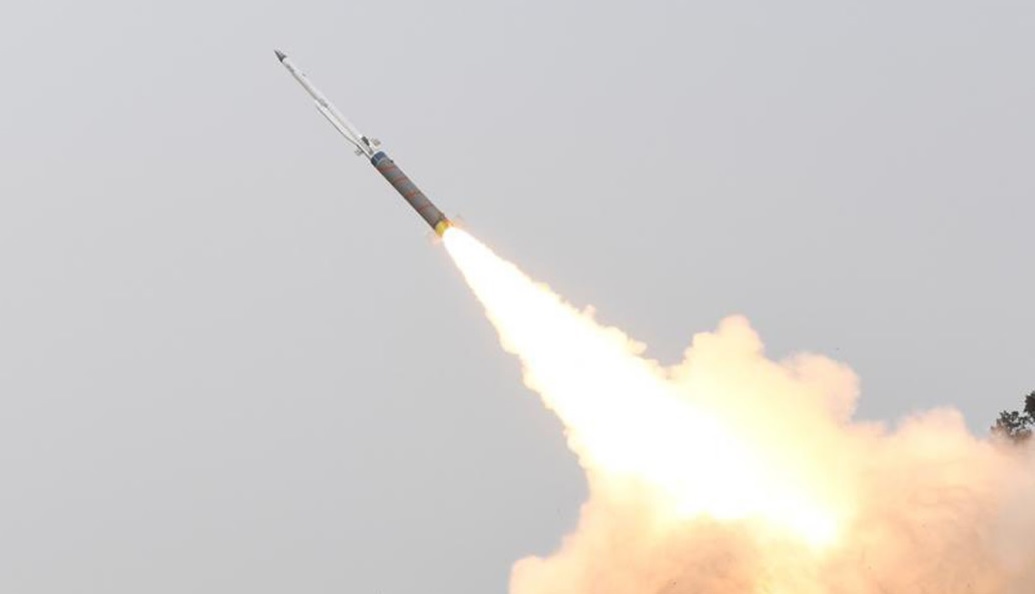
DRDO Successful Testing of Liquid Ramjet Fuel Signals Advancement in Air-Breathing Engine Technology
India
India India's DRDO achieves a milestone with successful testing of liquid Ramjet fuel, marking a significant leap in air-breathing engine technology. Collaboration with industry partners enhances indigenous defense capabilities for future platforms.India's Defence Research and Development Organisation (DRDO) has achieved a major breakthrough in air-breathing engine technology. On May 9th, 2024, DRDO announced the successful development and testing of liquid Ramjet fuel, a significant milestone in advancing propulsion systems.This accomplishment is attributed to the efforts of the Defence Materials and Stores Research and Development Establishment (DMSRDE), a laboratory under DRDO. The newly developed fuel underwent rigorous testing on May 8th, 2024, at the Ramjet Testbed located at the Defence Research and Development Laboratory (DRDL). These tests affirmed the fuel's effectiveness in powering advanced air-breathing engines. The collaboration between DMSRDE and industry partners, including M/s Bharat Petroleum Corporation Limited (BPCL) and M/s Mineral Oil Corporation Pvt Ltd, played a pivotal role in achieving this milestone. This partnership highlights the successful synergy between government research institutions and private enterprises in driving innovation for India's defense sector.The significance of this breakthrough goes beyond propulsion technology. The development of this new liquid Ramjet fuel has the potential to enhance the capabilities of several ongoing Indian defense programs.This achievement underscores India's commitment to advancing its indigenous defense capabilities. Further research and development efforts are expected to build upon the success of this liquid Ramjet fuel testing, paving the way for more powerful and efficient air-breathing engines for future defense platforms.
Read More → Posted on 2024-05-10 06:21:52World
Pakistan Pakistan's Army Chief vows unwavering resolve against those responsible for the May, 9 ,2023 attacks, stressing accountability and commitment to national security. The Chief of Army Staff of Pakistan, General Syed Asim Munir, said that there can be no compromise with the planners and architects of the attacks of May 9, 2023, that took place on military establishments in the country, terming it the 'dark chapter in our history', reported ARY News.The Army Chief made these statements, according to the Inter-Services Public Relations (ISPR), to the soldiers and officers of the Garrison at Corps Headquarters in Lahore.According to General Syed Asim Munir, May 9, 2023, would always be remembered as a dark day in Pakistan's history because on that day, 'deliberately indoctrinated and insidiously guided miscreants' attacked the symbols of the state."Due to these deplorable acts of criminally orchestrated violence, enemies of Pakistan were provided the opportunity to mock the state and the nation. COAS deplored that now the same plotters were brazenly and shamelessly trying to twist the narrative and implicate the state in this despicable endeavour," he said, according to ARY News.Notably, it was during the May 9 riots, military installations were attacked by 'PTI workers' after the arrest of the former prime minister Imran Khan.The Army Chief made it plain that those who pose as victims and claim to be "real leaders" will be held responsible for their acts, especially if there is unquestionable proof of their involvement and collaboration in sabotage and organised violence."Our patience not to respond, to daily provocations in this regard made in brazen violation of the constitution, has limits and it must never be misconstrued as weakness," the Army Chief said.
Read More → Posted on 2024-05-10 06:09:28World
U.S RTX introduces FORGE MDPAF, a groundbreaking space-based missile warning system, empowering the US Space Force to process satellite data swiftly and effectively. Collaborating with the US Army, RTX also advances air defense capabilities with projects like missile-tracking satellites and the AN/SPY-6 radar system.RTX, a leading technology company, has unveiled its latest innovation in space-based missile warning systems. The Future Operationally Resilient Ground Evolution Mission Data Processing Application Framework (FORGE MDPAF) is now fully operational, marking a significant milestone in enhancing the capabilities of the US Space Force’s Overhead Persistent Infrared Battlespace Awareness Center (OBAC).This cutting-edge system is designed to process, exploit, and disseminate information gathered from satellites, enabling swift and effective responses to potential threats. What sets FORGE MDPAF apart is its ability to handle data from various sources, including the Space Force’s satellite constellation and other civil and environmental sensors.Sandy Brown, Vice President of Raytheon Mission Solutions & Payloads, highlighted the system's adaptability to the growing volume of satellite data. "FORGE MDPAF is designed to scale to meet current missile warning data demands while also accommodating future needs as space data processing evolves," she explained.Looking ahead, RTX anticipates further enhancements to FORGE MDPAF, envisioning its evolution into a comprehensive missile warning detection system in future upgrades.In addition to its work with the Space Force, RTX has collaborated with the US Army to strengthen air defense capabilities across multiple domains. A notable project involves the development of seven missile tracking and warning satellites, aimed at monitoring ballistic and hypersonic launches, particularly in light of recent tests conducted by China.This endeavor underscores RTX's commitment to bolstering national security and defense infrastructure. Another notable contribution is the development of the AN/SPY-6, an advanced air and missile defense radar system designed to enhance situational awareness for the US Navy.These initiatives reflect RTX's dedication to innovation and collaboration in addressing emerging security challenges. By leveraging cutting-edge technology and fostering strategic partnerships, RTX continues to play a vital role in safeguarding against potential threats to global stability and security.
Read More → Posted on 2024-05-10 06:04:09World
South Korea South Korea's KF-21 Boramae fighter jet successfully tests the Meteor long-range air-to-air missile, showcasing enhanced combat capabilities and bolstering export prospects with its precision and effectiveness.South Korea's Defense Acquisition Program Administration (DAPA) has achieved a significant milestone in the development of its KF-21 Boramae fighter jet. On May 8, the KF-21 successfully tested the Meteor long-range air-to-air missile, marking a crucial step forward in its combat capabilities.During the test, the Meteor missile was launched from the KF-21 at an unmanned target positioned 87 kilometers away. The aircraft's radar system, equipped with advanced technology, tracked the target with precision. The missile, renowned for its long-distance engagement capabilities, separated from the KF-21 and approached the target with remarkable accuracy, passing within one meter of it.This successful demonstration underscores the KF-21's compatibility with cutting-edge weaponry, bolstering its potential for export to international markets. Produced by European defense contractor MBDA, the Meteor missile significantly enhances the KF-21's combat effectiveness by enabling it to engage air targets at extended ranges. With the capacity to carry up to four Meteor missiles under its fuselage, the KF-21 emerges as a formidable asset in modern aerial warfare.In addition to the Meteor missile test, DAPA also confirmed the successful testing of the IRIS-T short-range air-to-air missile on the same day. This further highlights the versatility of the KF-21's armament capabilities, making it a versatile platform for various mission scenarios.The integration of the Meteor missile with the KF-21 solidifies its position as a world-class fighter jet, joining the ranks of other renowned aircraft types such as the Rafale, Eurofighter, and Gripen. With this achievement, South Korea demonstrates its commitment to advancing its defense capabilities and fostering strategic partnerships in the global defense arena.The successful test of the Meteor missile from the KF-21 Boramae fighter jet marks a significant milestone in South Korea's defense capabilities. With its precision and effectiveness demonstrated, the KF-21 emerges as a formidable contender in modern aerial warfare, poised to meet the evolving challenges of the 21st century.
Read More → Posted on 2024-05-10 06:00:06India
India ,IsraelIndia celebrates milestone as it achieves self-sufficiency in ammunition production, signaling a shift towards reducing reliance on imports for defense needs. With 150 out of 175 ammunition types now sourced domestically, the Indian Army plans to procure solely from Indian vendors, fostering indigenous manufacturing and bolstering defense capabilities.Israeli Aerospace Industries (IAI) unwittingly revealed its largest customer — India — to which it exported close to a billion dollars' worth of weapon systems last year (2023).This is down 17 per cent from the year 2022.IAI made this gaffe in its annual reports by listing dates of past transactions with its customers. Although the annual report did not explicitly name India (it mentioned Material Customer A), the dates listed can be matched with past public announcements made by IAI regarding deals with India.For example, the annual report stated, “In October 2018, IAI entered into an agreement with a government company in Material Customer A's country for the joint manufacture and supply of air defence systems totalling $777 million.”This perfectly aligns with IAI’s announcement that month stating that it had entered into an agreement with Bharat Electronics Limited (BEL) to supply the naval Barak 8 surface-to-air missile (SAM) system worth $777 million.Multiple of these announcements can be matched with the listings in the annual reports, such as the further supply of Barak 8 SAM worth $1.6 billion in April 2017, a $550 million deal for the Sky Capture C3 system in October 2018, and many more.In total, India ordered arms worth $953 million last year from IAI, with $94 million for unmanned aerial vehicles (UAVs), $202 million for radars and electronic warfare (EW), and $631 million for missiles.India is the world’s largest importer of arms with Russia being its largest supplier, closely followed by France, the US, and then Israel.However, India’s domestic ammunition manufacturing ecosystem is now rising to the occasion.Just yesterday (8 May), Indian Army’s ADG (Procurement) Major General V K Sharma announced that India has become self-sufficient in domestic ammunition production, with the army planning to order ammunitions only from Indian vendors.Maj Gen Sharma stated, “In the next financial year (2025-26), we will not have any import of ammunition, other than in cases where the quantity is too low and it is not economical for the industry to manufacture them.”According to Maj Gen Sharma, the army has found indigenous suppliers for 150 of the 175 ammunition types in its inventory.The army usually procures Rs 8,000 to Rs 6,000 crore worth of weapons and ammunition, contracts for most of which will now go to Indian suppliers.It appears that the intense efforts of the entire military-industrial ecosystem, including the government of India, Ministry of Defence, all three services, and the private manufacturers, are now bearing fruit.Source - swarajyamag
Read More → Posted on 2024-05-10 05:55:34World
Bangladesh An Air Force training plane crashed into the Karnaphuli River near Chattogram's Patenga area, but both pilots survived. The YAK 130 aircraft caught fire after takeoff, leading to its mechanical failure and subsequent crash.An Air Force training plane crashed into the Karnaphuli River near Chattogram's Patenga area, but thankfully, both pilots aboard survived the ordeal. The incident occurred shortly after takeoff from the Chittagong Air Base at 10:28 am on Thursday, according to Group Captain Taslim Ahmad, the manager of Shah Amanat International Airport.The plane, identified as a YAK 130 training fighter aircraft of the Bangladesh Air Force, caught fire immediately after takeoff. Eyewitnesses reported that it broke into pieces and scattered as it crashed into the Karnaphuli River behind the boat club, as confirmed by Shakila Sultana, deputy commissioner (port) of the Chattogram Metropolitan Police.Fortunately, both the pilot and the co-pilot managed to parachute to safety and were subsequently rescued. They were swiftly taken to a nearby hospital for medical evaluation.The Inter-Services Public Relations attributed the crash to mechanical failure. The YAK 130, a Russian-made advanced jet training aircraft, is a crucial asset in the training of Air Force personnel on fourth and fifth-generation fighter jets. Additionally, it can serve as a light combat and reconnaissance aircraft. The Bangladesh Air Force boasts a fleet of several YAK 130s.In the wake of the accident, river transport on a segment of the Karnaphuli River was temporarily halted as a precautionary measure. However, port authorities soon lifted the alert once the situation was deemed under control.The incident serves as a reminder of the inherent risks associated with aviation operations, underscoring the importance of rigorous training and maintenance protocols to ensure the safety of aircrew and the public alike.
Read More → Posted on 2024-05-09 15:53:17World
Poland Poland gears up to enhance national security with the procurement of the "Barbara" aerostat reconnaissance program, featuring advanced radars capable of monitoring neighboring skies for potential threats, including low-flying objects and stealth aircraft.In a significant move towards bolstering national security, the Polish government is on the verge of signing the procurement contract for the "Barbara" aerostat reconnaissance program. General Artur Kuptel, head of the country’s armament procurement agency, announced that the contract is expected to be finalized by mid-May.The "Barbara" aerostat systems, estimated at $1.2 billion, have received clearance for procurement from the United States. This comprehensive program encompasses airborne early warning radars equipped with identification friend-or-foe capabilities, electronic sensors, ground control systems, and mooring systems featuring powered tethers and embedded fiber optics. Key contractors involved in this initiative include Raytheon Intelligence & Space, ELTA North America, and Avantus Federal LLC.One of the primary objectives of the aerostat suspended radars is to provide extensive surveillance coverage, monitoring the skies up to neighboring regions including Ukraine, Belarus, and the Russian exclave of Kaliningrad, all from within Polish airspace. These advanced radars possess the capability to detect various threats, including low-flying objects such as cruise missiles and stealth aircraft with low-radar cross-sections.General Kuptel highlighted the significance of eliminating blind spots in surveillance, noting that the curvature of the Earth and ground-based obstructions can create shadows where potential threats may go undetected. By deploying the "Barbara" aerostat systems, these blind spots are effectively addressed, ensuring comprehensive monitoring and enhanced national security.The acquisition of the "Barbara" aerostat reconnaissance program represents a proactive step by the Polish government to safeguard its borders and airspace against emerging threats. With its advanced capabilities and strategic positioning, this program is poised to significantly enhance Poland’s defense capabilities and contribute to regional stability.In conclusion, the impending signing of the procurement contract marks a significant milestone in Poland’s efforts to bolster its national security infrastructure. The "Barbara" aerostat reconnaissance program promises to provide comprehensive surveillance coverage, enabling timely detection and response to potential threats, thereby ensuring the safety and security of the nation and its people.
Read More → Posted on 2024-05-09 15:48:07Search
Top Trending
-
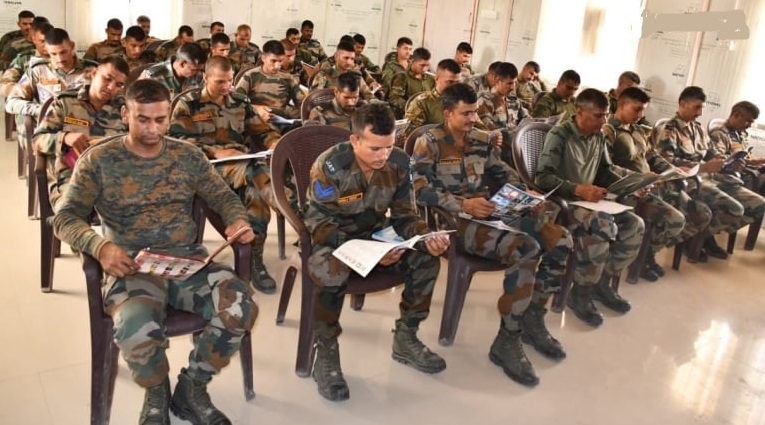 Agneepath Scheme replaced with Sainik Samman Scheme 2024, Defence Minister Rajnath Singh Relaunched Agniveer Scheme
Agneepath Scheme replaced with Sainik Samman Scheme 2024, Defence Minister Rajnath Singh Relaunched Agniveer Scheme
-
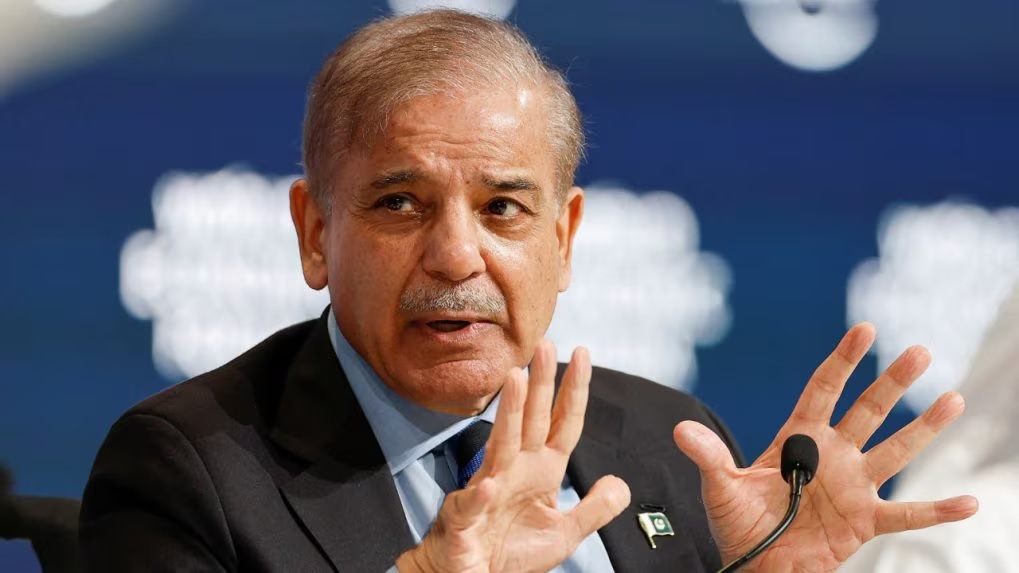 Pakistan Announces 15% Increase in Defence Budget for 2024-25 Amid Economic Crisis
Pakistan Announces 15% Increase in Defence Budget for 2024-25 Amid Economic Crisis
-
 China's Latest DF-31AG ICBM Test: A Strategic Leap in Global Missile Capabilities
China's Latest DF-31AG ICBM Test: A Strategic Leap in Global Missile Capabilities
-
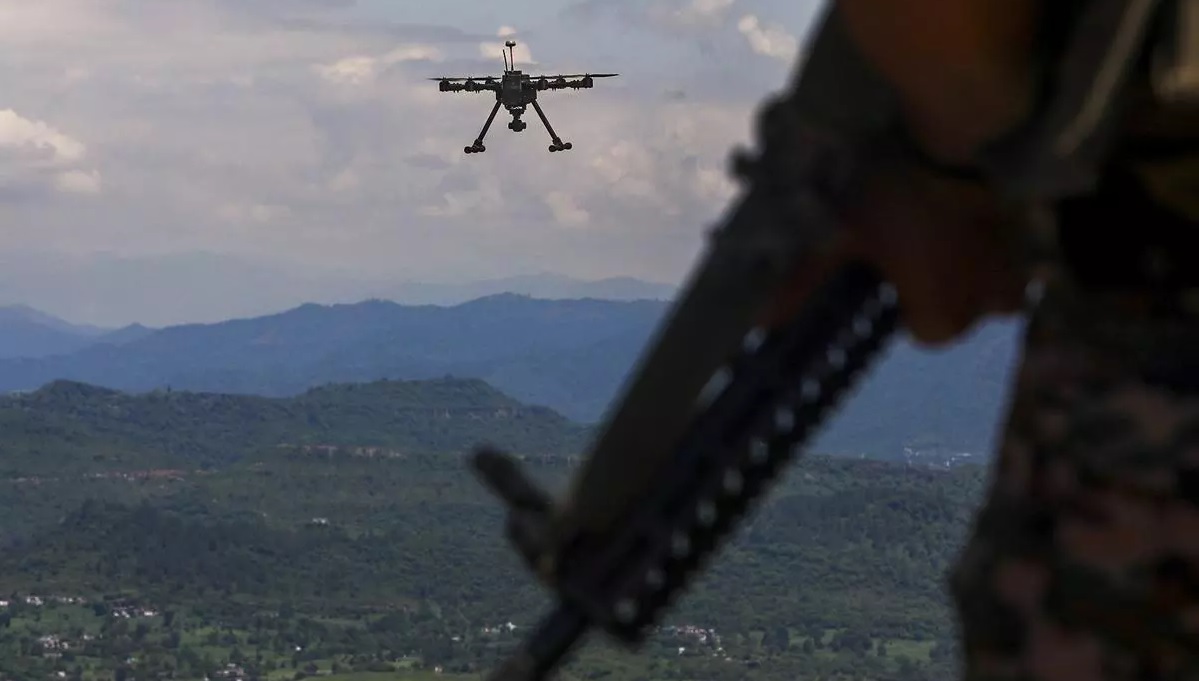 India's Defence Ministry Warns Against Chinese Parts in Military Drones Amid Security Concerns
India's Defence Ministry Warns Against Chinese Parts in Military Drones Amid Security Concerns
-
 China’s Super Radar Detects Mysterious Plasma Bubble Over Giza Pyramids
China’s Super Radar Detects Mysterious Plasma Bubble Over Giza Pyramids
-
 India's Indigenous Kaveri Engine Program with New Focus on Thrust and Performance
India's Indigenous Kaveri Engine Program with New Focus on Thrust and Performance
-
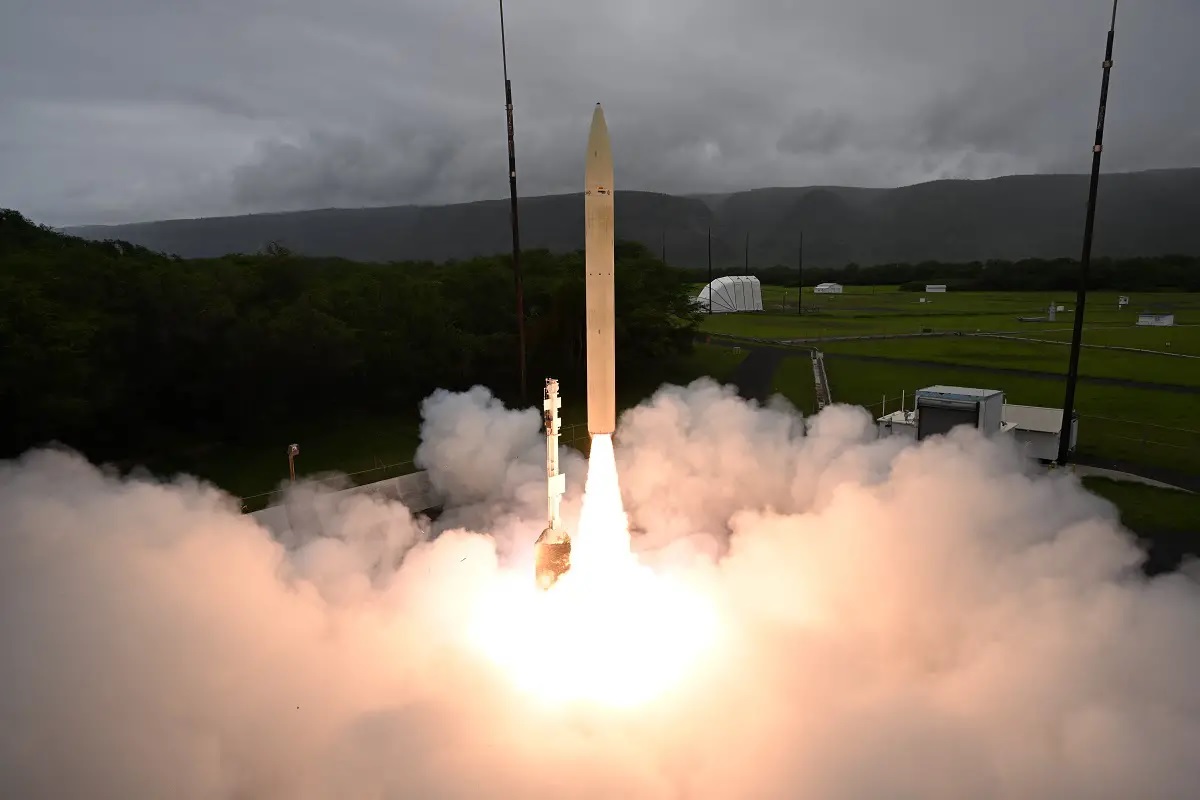 Successful Hypersonic Missile Test by U.S. Department of Defense
Successful Hypersonic Missile Test by U.S. Department of Defense
-
 Isro Draws up Ambitious Plan for 2024, says will Launch at Least 12 Missions
Isro Draws up Ambitious Plan for 2024, says will Launch at Least 12 Missions
Top Trending in 4 Days
-
 ISRO to Launch Historic SpaDEX Mission on December 30, 2024: India’s First Space Docking Experiment
ISRO to Launch Historic SpaDEX Mission on December 30, 2024: India’s First Space Docking Experiment
-
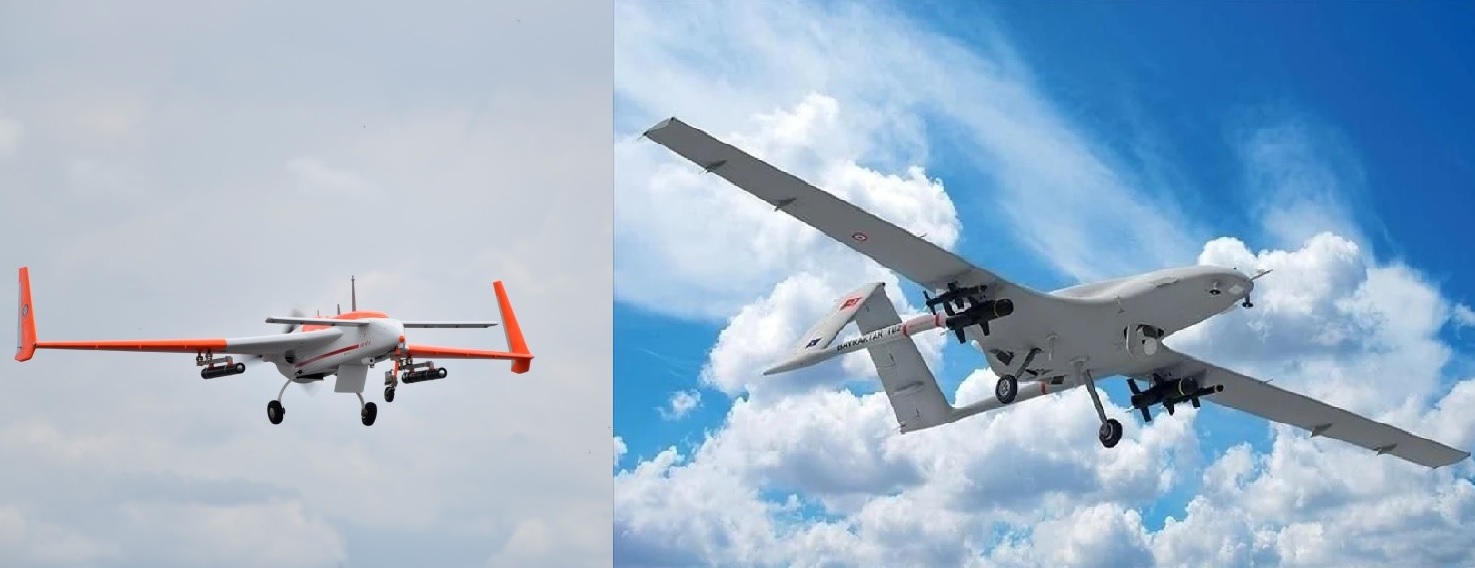 SRUAV-Weaponised vs Bayraktar TB2: A Detailed Comparison of India’s and Turkey’s Armed Drones
SRUAV-Weaponised vs Bayraktar TB2: A Detailed Comparison of India’s and Turkey’s Armed Drones
-
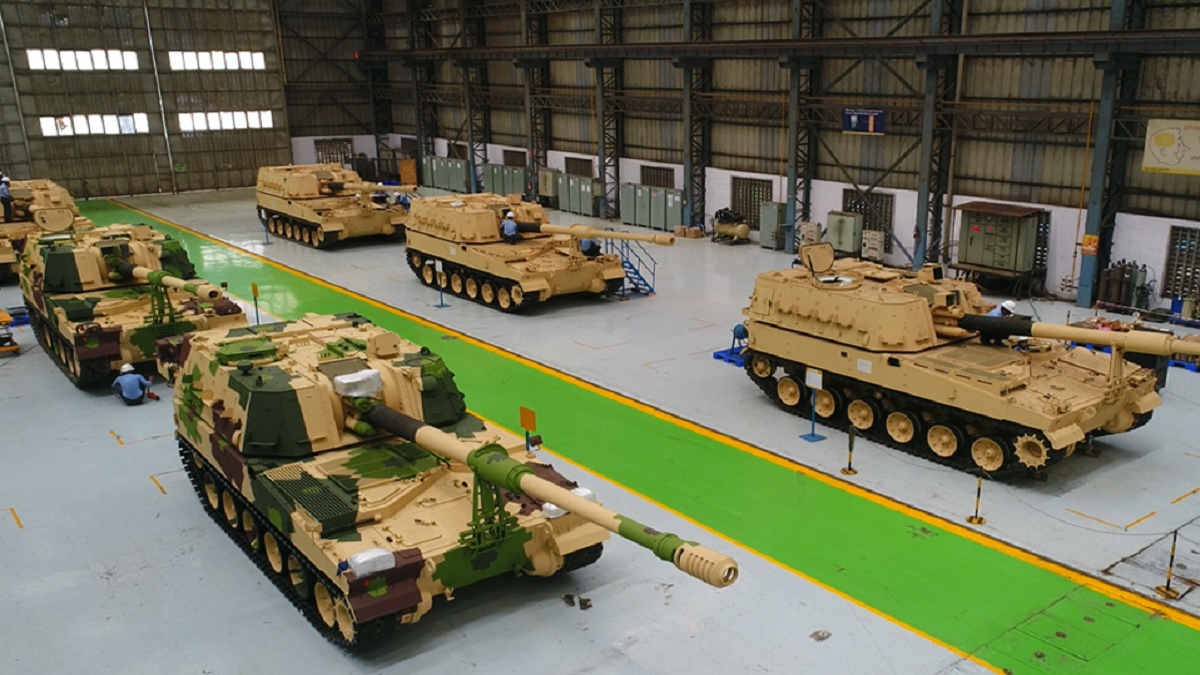 MoD Signs ₹7,628.70 Crore Deal with L&T for K9 Vajra-T Artillery Guns
MoD Signs ₹7,628.70 Crore Deal with L&T for K9 Vajra-T Artillery Guns
-
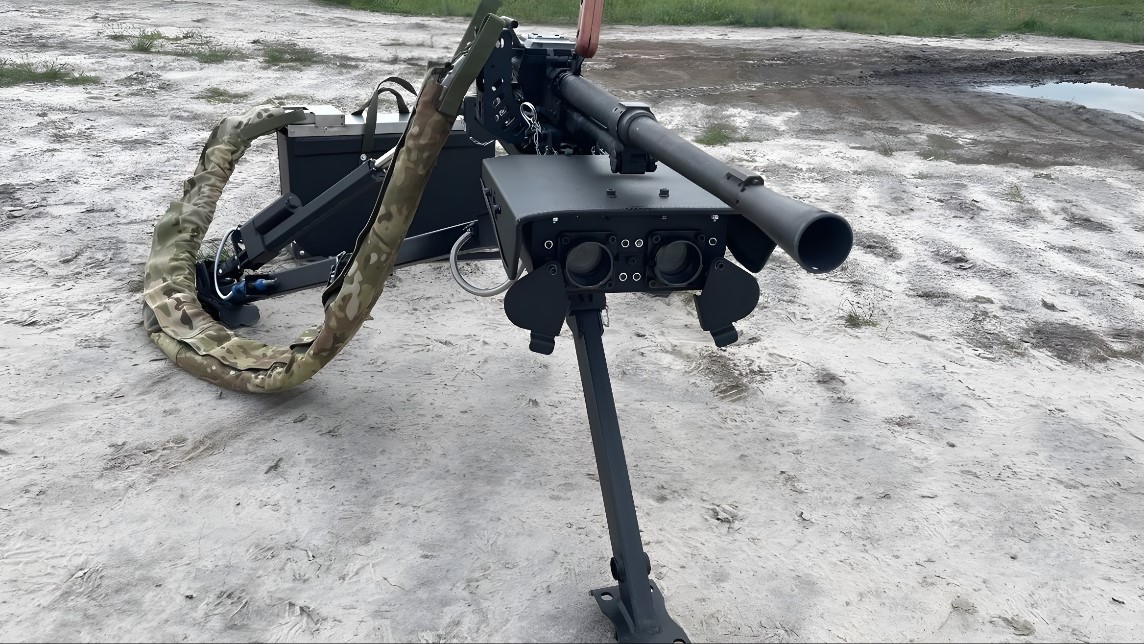 Robotic Wolly Turrets: Ukraine’s New Weapon Against Evolving Battlefield Threats
Robotic Wolly Turrets: Ukraine’s New Weapon Against Evolving Battlefield Threats
-
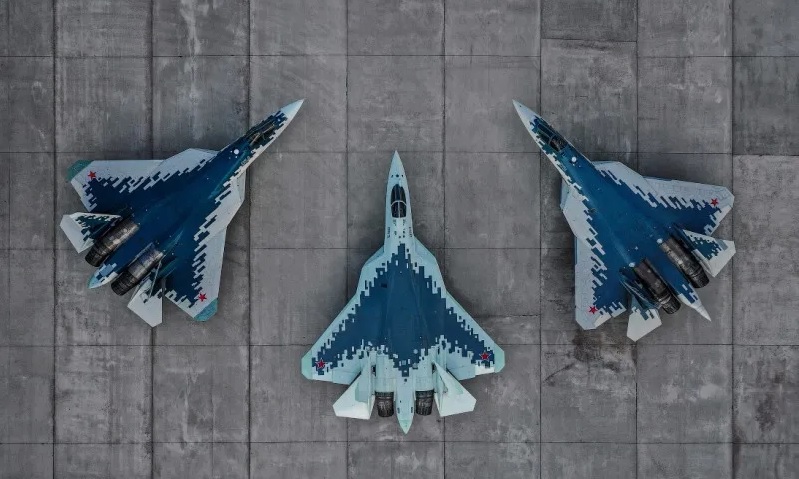 Russia to Propose 70 Su-57E Fighter Jet with AL-51F Engines G2G Deal to India During Putin's 2025 Visit
Russia to Propose 70 Su-57E Fighter Jet with AL-51F Engines G2G Deal to India During Putin's 2025 Visit
-
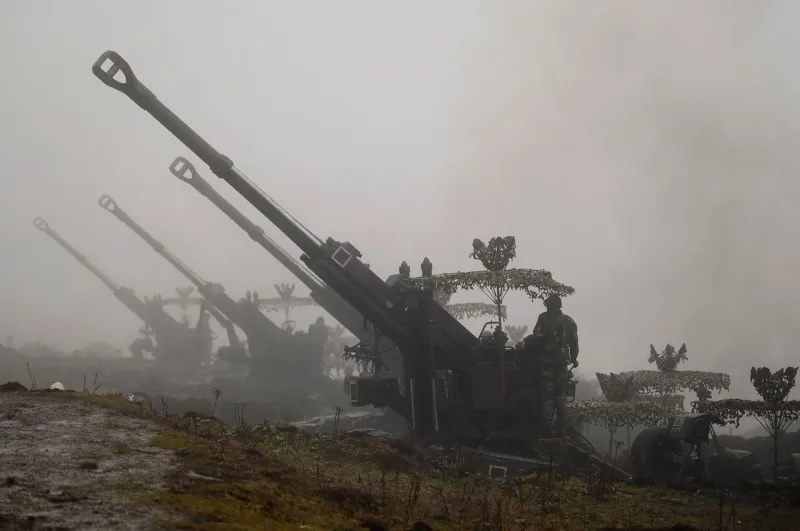 Pentagon Report: China Stations 120,000 Troops, Tanks, and Missiles Near Indian Border
Pentagon Report: China Stations 120,000 Troops, Tanks, and Missiles Near Indian Border
-
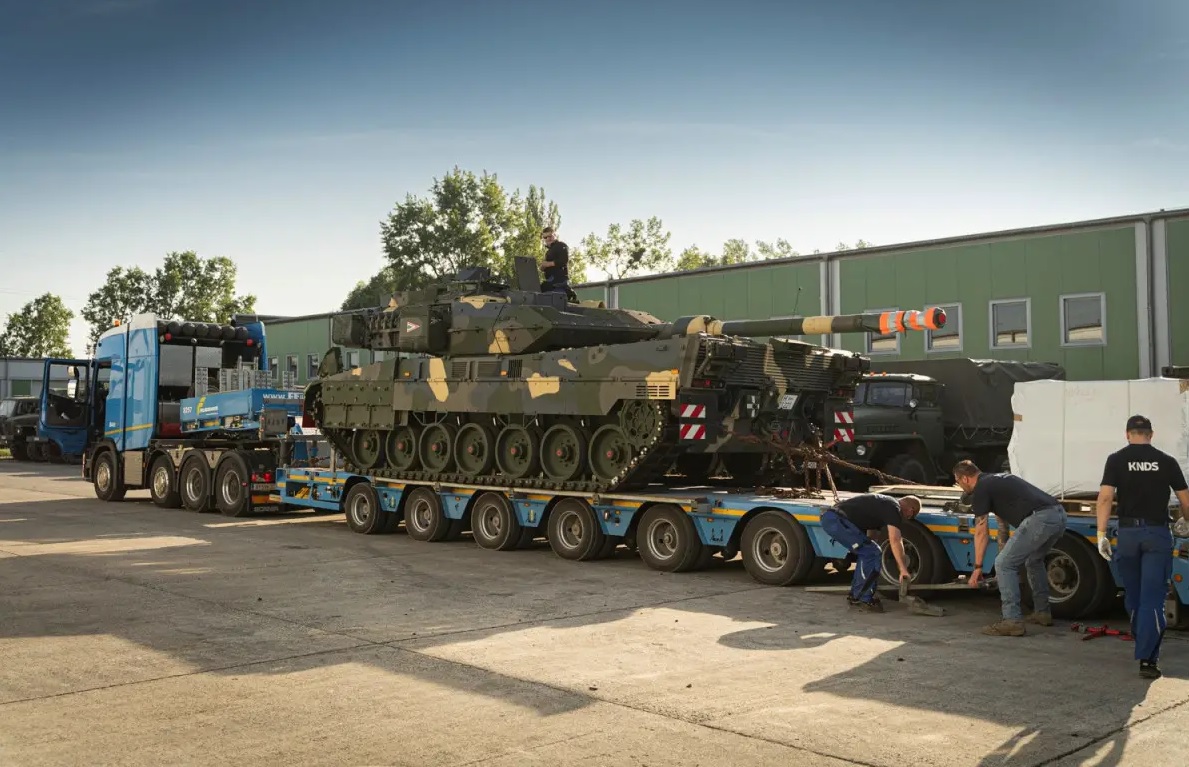 Hungary Receives 31 Leopard 2A7HU Tanks in Military Modernization Push
Hungary Receives 31 Leopard 2A7HU Tanks in Military Modernization Push
-
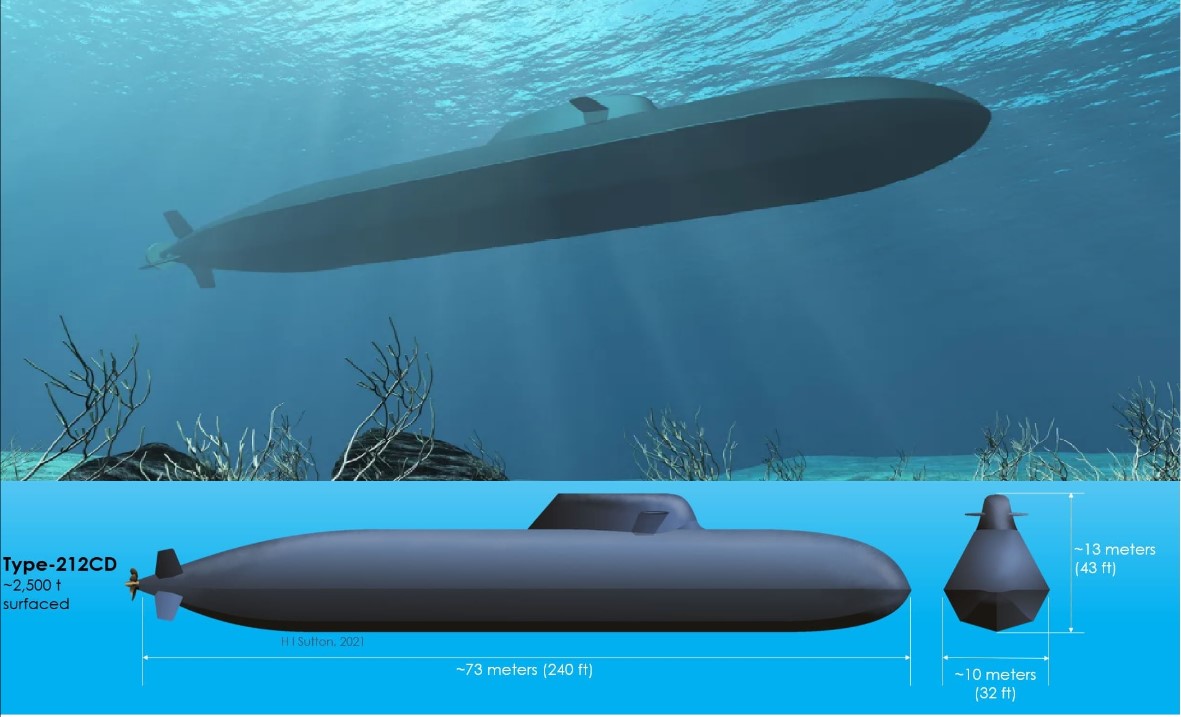 Germany’s Naval Expansion: Bundestag Approves Budget for Four Additional Type 212CD Submarines
Germany’s Naval Expansion: Bundestag Approves Budget for Four Additional Type 212CD Submarines

